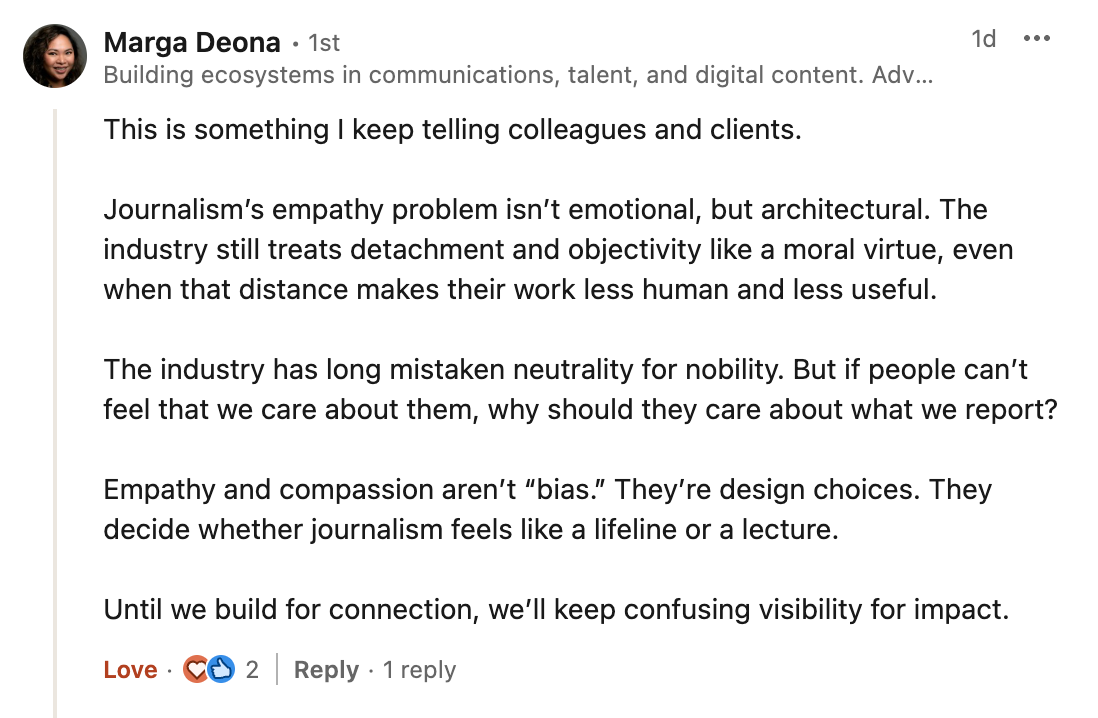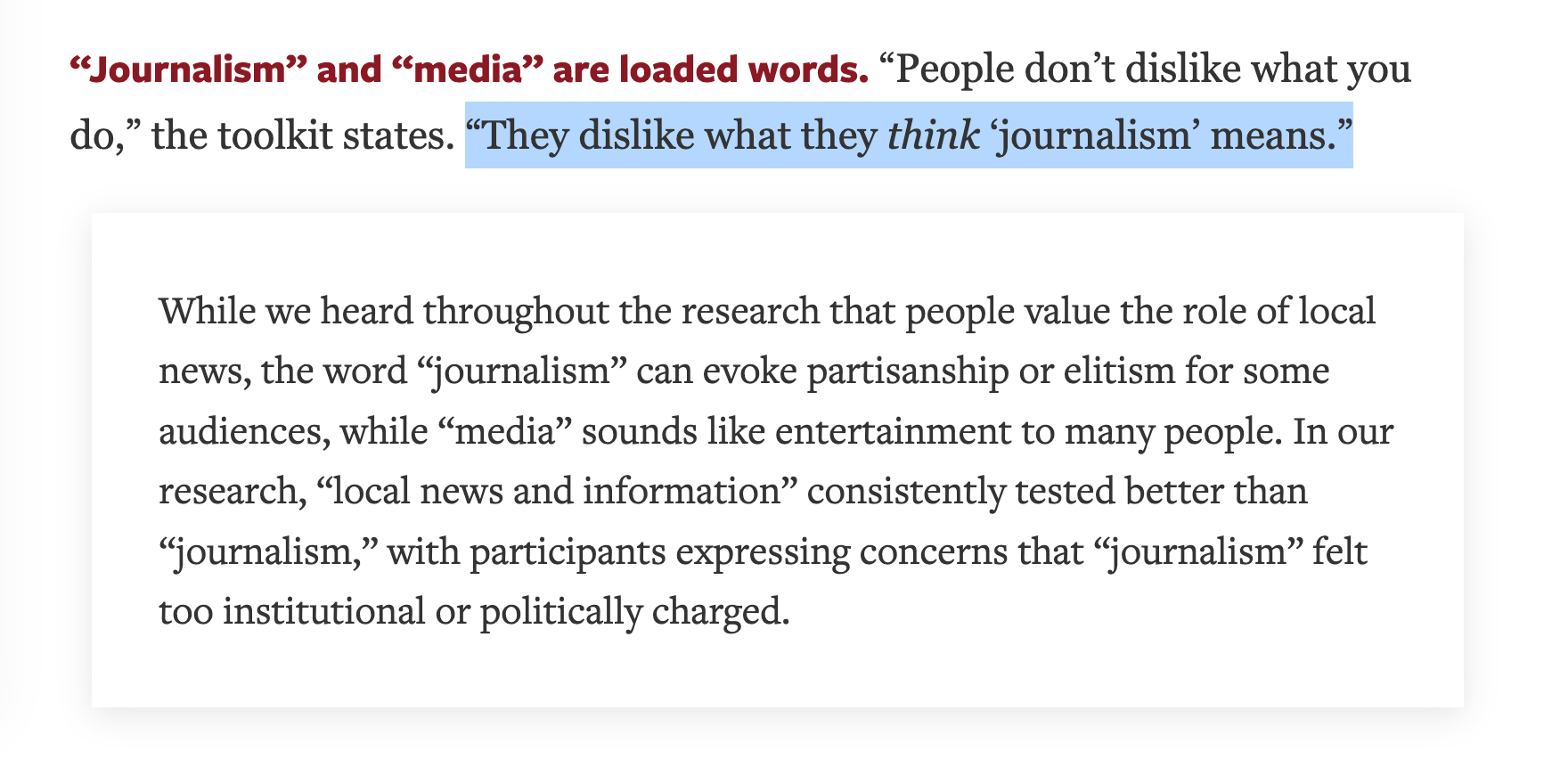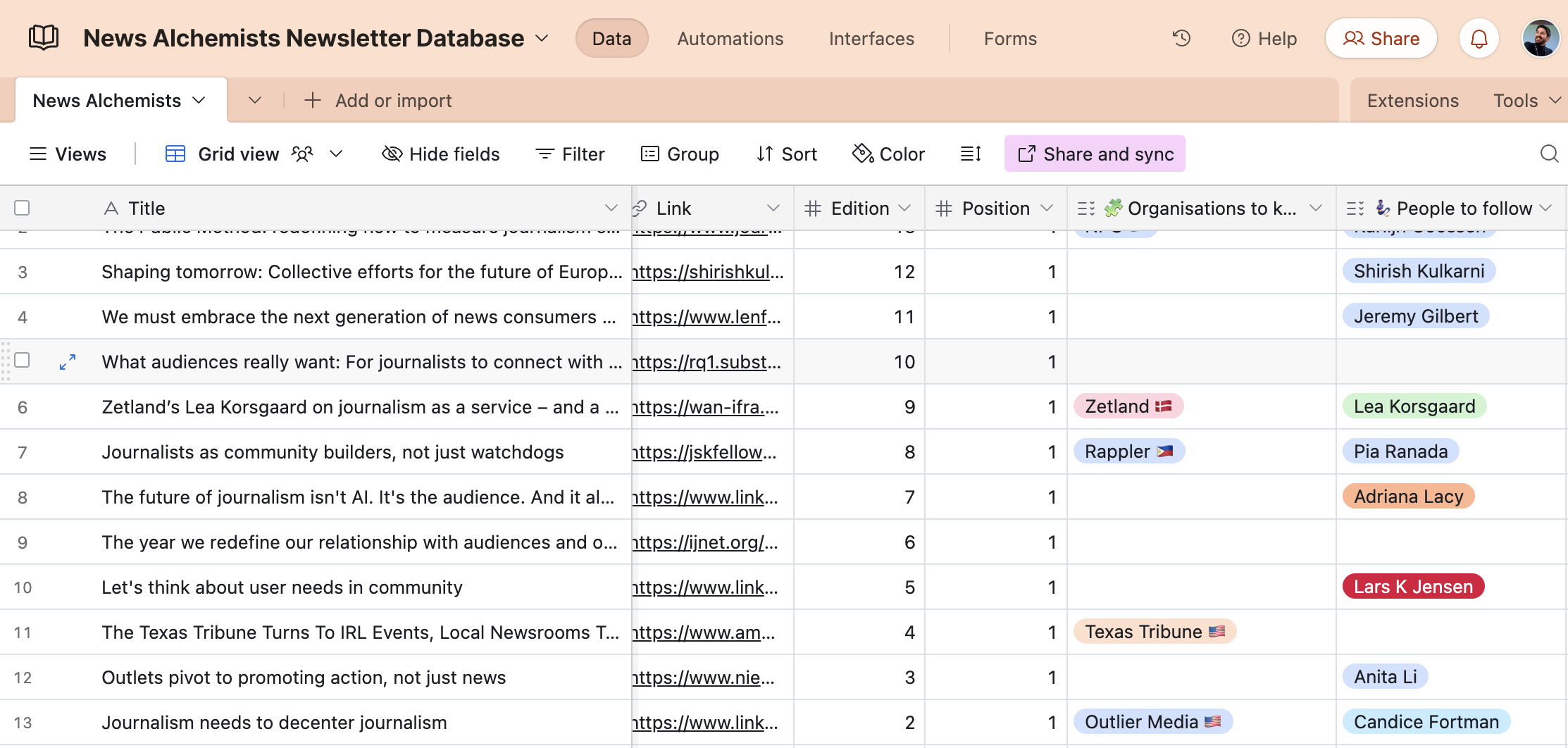🔶 News Alchemists #39: "Closing the gap with readers: an end to business as usual in journalism"
Hello and welcome back to the News Alchemists newsletter!
And a special welcome to new subscribers who joined over the last two weeks from Mediahuis, dpa, the National Trust for Local News, the Earth Journalism Network, Norran, EenVandaag, Fundo Brasil de Direitos Humanos, Soiciety, Marquette University, the University of Minnesota, and all of you brave souls working for yourselves. I hope you will like it around here 🤗
Last week, we talked about skepticism and resistance. The resistance that many of us experience when promoting the idea that journalism should aim to be more useful and create more value for people – rather than limiting itself to 'informing the public'. (The use of 'people' vs 'public' is not accidental.)
I asked: What does that resistance look like? What are the most common arguments that fuel it?
Your responses are starting to paint a clear picture. Here are some examples of resistance you told me you encountered:
“It’s not news.” A very narrow idea of what news is - i.e. the idea that it needs to be something totally new that has not been reported on by anybody at anytime. I would argue that the “newness” can be in the freshness of presentation and context provided. Also, does all journalism need to be about something totally “new”? I don’t think so. So many challenges are complex and ongoing.
“This is activism.” Some colleagues still believe journalism’s only purpose is to uncover the truth and hold power accountable — but they completely forget that journalism is a service, not something unidirectional or passive. The reality is, people are getting informed about what truly matters to them through many other sources. [...] And here comes the second resistance: believing that journalism matters to people just because it should — that they’ll pay for it simply because it’s supposed to be essential to their lives.
“I don't want to produce trivial news because that's what young people want to consume.” The reason behind the resistance is - I believe - mostly a feeling of loss of professional identity. When it comes to coping with loss (any loss), you could map/plot the arguments within the five stages of grief, where most of the resistance is in the denial phase.
"We're not community activists" - the idea that journalists just provide/unearth/bring to light information. They cannot and should not have any publicly expressed view about how that information could be processed, individually and collectively, and acted on for social good.
And this is just the tip of the iceberg, I'm sure. I'll leave it at that for now. If you have another example of resistance to share, do it here.
Before we move to the links though, I want to share this fantastic comment that 🧞Marga Deona shared under a post I wrote on LinkedIn about these same topics:

Enjoy this week's links, and if you like it here, spread the hope: Forward this email to a colleague and encourage them to sign up. The fight for people-centricity gets a little easier when you have allies.
Have a great week 👋
1. Closing the gap with readers: an end to business as usual in journalism 👉 LINK
Over the last couple of weeks, the evaluation I'm conducting for the Solutions Journalism Network has put me in the position to meet some fantastic climate reporters from all over Europe, as well as some of their colleagues. And because journalism is a very small industry, this has also led to reconnecting with some brilliant people I cooperated with years ago during my time at the European Journalism Centre. One of them is 🧞Cécile Prieur, executive editor of French magazine Le Nouvel Obs. As a JSK Fellow at Stanford University in 2019, Cécile wrote this great piece that reminded me once again that the push for more people-centricity in journalism is nothing new:
"We cannot just do great journalism and think that people will notice. We have to explain what journalism is and explain its purpose, why our work is not driven by our self-interest but by the public one. We have to explain who we are, what our values and ethics are, also who our funders or shareholders are, and what our business models are. We have to reach audiences and ask them if we are doing our jobs well or not, what are we missing in our coverage, what are our biases and blind spots."
2. Bristol Cable launches hybrid news and social networking app in bid to double membership 👉 LINK
News organisations building their own social network has been quite a trend in recent years (I just helped build Daily Maverick Connect), but this project from 🧩 The Bristol Cable might bring the idea to the next level. Very curious to see how this will play out.
Operations lead 🧞Jaldeep Katwala says the app is a response to both member feedback and broader dissatisfaction with existing social platforms. [...] "It’s about creating a gentler, more constructive space for discussion, rooted in our local community."
3. I spent over 20 years winning Emmys. Here's why a 22-year-old with a ring light has more credibility than me. 👉 LINK
Just read this post from 🧞Jill Manuel, you don't need my description.
"Meanwhile, a 22-year-old sets up a ring light in their bedroom and says, "I don't fully understand this yet, but here's what I'm learning." [...] That 22-year-old with questionable lighting and an iPhone is doing what journalism is supposed to do: making information accessible, building informed communities, and earning trust through transparency."
🍊 Do you want to share a link with other News Alchemists readers? About a product, a service, a story, a report, anything that will make us all think – or even better, give us some hope – about how we can continue to reimagine journalism and its role in society?
Sponsor the next edition of the newsletter and the 3rd spot is yours. Tell me what you want to share, and if I believe it fits with the needs of this community I'll write the blurb for you. Send me an email and let's talk.
4. As Wired turns its journalists into influencers, subscriptions surge 👉 LINK
Ambitious marketing campaigns; an attention to video with the goal of "making reporters the faces of its coverage"; higher subscription prices; and more IRL events "to connect our journalists in real time with an audience". The result? The number of new subscriptions is up 94% compared to the same period a year earlier. Is 🧩 Wired onto something here?
5. How we measure audience engagement at Der Spiegel 👉 LINK
A good post for the nerds out there – about the metrics used by 🧩 Der Spiegel to measure engagement. Open only if you are not afraid of acronyms or equations.

6. Don’t dwell on “democracy,” and other new findings about how to market local news 👉 LINK
New research by Press Forward in the US offers valuable insights and advice on what messaging and words get people interested in supporting local news. Example:

7. The impact/activism question, as seen from different parts of the globe 👉 LINK
Two of the examples of resistance discussed in the introduction referred to the 'fear' that many people in this industry appear to have nowadays: seeing their work confused for activism. Probably a good time to re-share this panel from this year's International Journalism Festival, featuring News Alchemists friends 🧞Miriam Wells and 🧞Khalil A. Cassimally among the speakers.



Member discussion